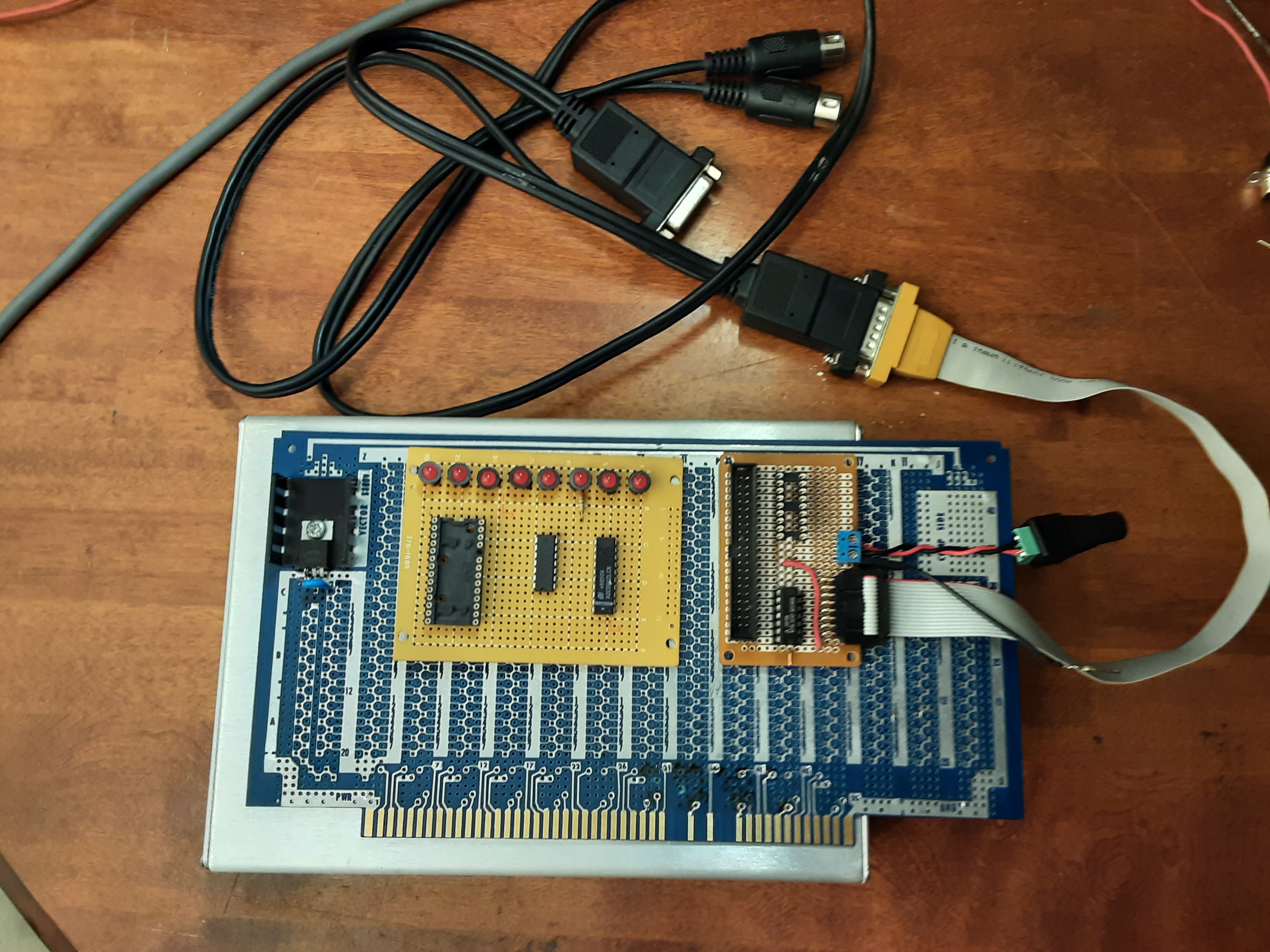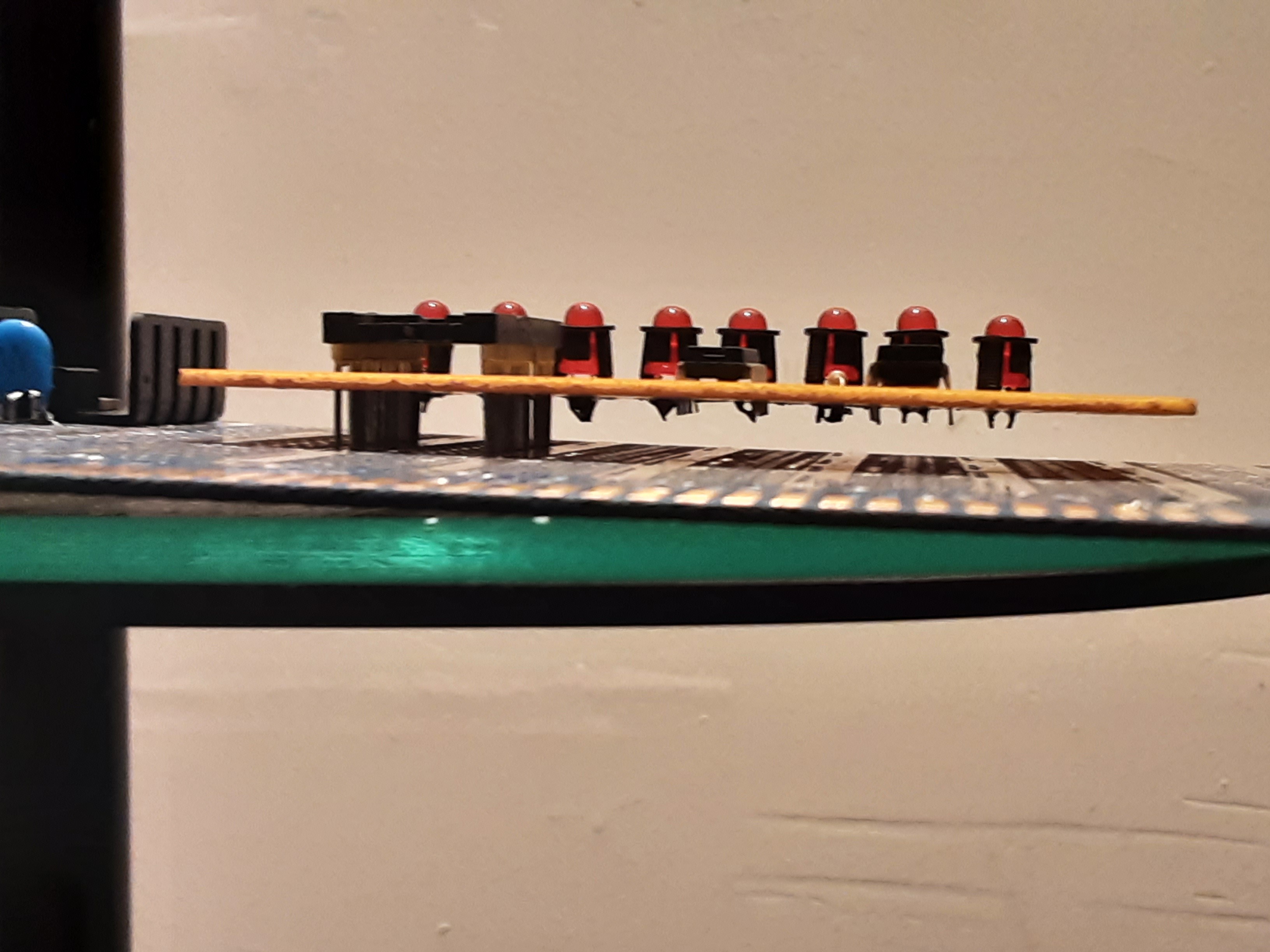
Here we have a general concept, of something that could be accomplished. Let's suppose that I have a custom board fabricated for my MIDI interface, which I built earlier today, using a combination of through-hole and surface mount components. In particular, what would happen if I used a surface mount version of the 328P, along with any level shifters, etc., that I might need for Propeller or Raspberry Pi interfacing?
So that could be used to make a stand-alone module. Then what if I leave some space on the board for a through-hole version of a 74HCT374 or something like that, which could then be inserted into a wire-wrap socket that could be soldered to the top board; but then the wire wrap pins could extend into the bottom board, where maybe only the power pins, and or corner pins would need to be soldered, i.e., so as to make potential disassembly - not impossible, just in case. This technique would allow for the construction of separate modules, where one module might be an extremely compact and otherwise fully self-contained 6502 computer, with CPU, RAM, and ROM; while another module could be an external I/O module, and yet another might be part of a debugging system, with or without blinking lights.

Then in effect, we could build up four or more layer designs, by creating individual modules that would then communicate through a "back-plane" of sorts; which would allow for the creation of a "final board" design - that can then be custom ordered and built up according to the final "project integration" plan; and with a good expectation that it will just simply work, "right out of the box", the first time.
Now if you have ever tried to plug an Arduino module into a prototyping board; you know about the header spacing glitch; which also makes it impossible to place "shields" side by side on a regular perf board. Which makes it completely unsuited for professional work. Clearly, something better is needed.

Here we see how the external IO might eventually use a multi-layer board to integrate with a larger system.
Well, in any case; I have reached the point, now that I have a way of getting MIDI signals in a board-friendly format so that I can consider the possibility of continuing with the real Altair MIDI project. Or is it going to be an Apple II MIDI project? Or will it be a Raspberry Pi MIDI dongle? Maybe it will turn into a MIDI everywhere micro-sequencer! Oh and let's not forget the time code. Yeah, time code. Gotta have time code, in some form or fashion.
Then again some of the newer Arduino stuff, like the Arduino Every, are looking fairly attractive, and I think that I just might be able to find a place to sneak in a pair of 15-pin headers. Yeah, so I download the latest datasheet for the Arduino Every, and it says something like "revised" on 4/11/2023.

When did they say that that was? Hmmm.
 glgorman
glgorman
Discussions
Become a Hackaday.io Member
Create an account to leave a comment. Already have an account? Log In.